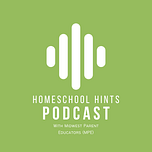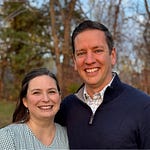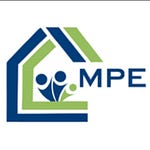TRANSCRIPT
Shanxi: Hello, this is Shanxi Omoniyi, host of MPE’s “Homeschool Hints” podcast to encourage you wherever you may be on your homeschool journey.
Today we’re listening to Adelaide Olguin, founder of Talkbox.Mom. She will be at our April 4th and 5th conference at the KCI Expo Center as one of our vendors.
She writes, “Learn how to start talking in a new language with your family from day one, whether you're brand new to a second language, a native speaker, or a parent with a bachelor’s degree in a language. I'll show you how easy and fun this process can be so that your multilingual family dreams can come true.”
Adelaide: Hey, it's Adelaide from Talkbox.Mom. I’m so excited for this homeschool conference coming up in Kansas City. Very excited for the Midwest Parent Educators conference tonight.
I'm going to be talking to you about foreign language success for any age, whether that's you have a teen in your home, whether you also have babies and toddlers, along with different aged children or on their own. It’s never too early to educate. And even for yourself, we're going to really be just talking about foreign language success and how you achieve that because sometimes, it just does not seem achievable. Also, tonight we are also going to have Bilingual in Nature, and we're going to be doing a bit of a giveaway, so be sure to comment during the live so that you can enter to win a copy of Bilingual in Nature.
So what this book is, is it has over 10 languages inside. It has cute illustrations, and it has full phrases in these language with native speaker audio to complete the experience. And we'll teach you how to use it also in the chat. So, very fun to use as you're out in nature, so be sure to comment as you are coming on so that you can enter to win one as well.
When I am talking about success in a language, I mean that when you wake up in the morning, your kids are greeting, or your child, is greeting you in the language. When you are setting the table for breakfast, you're using the language to set the table. Your families are asking for more in the language, you're talking about the food in the language.
Throughout your day, you're able to use the language to get things, to get chores done, to get your routines done, to go places, to have conversations with extended family. Iif they speak the language, you're able to use the language with them.
If your extended family doesn't speak the language, you're also still able to use it, not to talk about them – wouldn’t do that – but let's say your child uses the restroom and they don't flush or they don't wash their hands well. Instead of being like, Eww, you kids, gross, you can tell your child in French to go back and flush the toilet, and your family thinks, ooh La La, they speak French. That is what success looks like.
I'd love to ask you, what would it feel like for you and your family to be able to use a language? I would love to see that.
The language that we use in our home, the languages we use the most, are Spanish, German and English. However, we have practiced Italian, and we've gone to Italy and used our Italian. We’ve done the same for French, and recently we have been working very hard on our Japanese, Mandarin and Korea because in one week from tomorrow, we leave to Asia for a month, and we are going to go and use those languages.
I also speak on traveling the world as you homeschool, and how to use points so you can do it more often and not pay very much money. So that is very fun.
So what would it feel like to actually use the language? It might feel like the Tody family. Kimberly said, My kids spoke Italian to their nono grandpa in Italian. He was shocked at first, and then teary eyed as none of his grandchildren have ever spoken Italian. What a way to connect with your culture. What a way to delight your family and have that connection.
We have so many opportunities to connect others, to help others. I love what Denise has said. She's a TalkBoxer, mom of a teenager. She said, when we're in other countries using other languages, Korean, Mandarin, Spanish and makes us feel like a part of those places, not just like visitors. I have opportunities every day, same with my kids, to be able to use our Spanish and help others. We have opportunities when we travel, to connect with others. It's so wonderful, but here's the thing.
Not everybody gets this far, and it isn't their fault. OK. So what usually happens, is a lot of people will start when they learn a language with numbers, letters and colors. Have you ever learned a language like that?
When you start with numbers, letters and colors, well, you only learn numbers, letters and colors. And a, 23, blue does not magically get you to speak the language. It just doesn't happen. It's not going to add up to that.
But why do we start there? We start there because that's where our kids start in preschool. But that undermines everything we did as parents, or caregivers, we help our kids to talk.
So before our kids go to school, we've already (done) preschool and learning these things, we've already been talking to them and using the language.
So I want to talk about that because if you really understand that, then you will be able to pass up years of trying to learn a language.
You will start talking from day one and make a lot of progress. With Talkbox.Mom, we give you the road map to get there.
But I want to talk to you about how that works, why that works, so you can really see progress, and also you can you can kind of spot some language scams out there. You'll see what's not going to work.
And then, Jennifer says, how do you bring together the languages and the nature experience? I already told you a little bit, but my language journey started when my kids were really little.
When my first baby was born, I could already speak German and I brought him home from the hospital and I thought, I'll just speak German to him because I've worked in Germany. I was living in Germany, my husband and I at the time. But then I realized, I couldn't actually talk to him in German. I didn’t know how to say that poop went up his back, know how to ask for the wipes. There are so many things that I couldn't use, and I realized that even though academically I knew the language, or at work, I knew the language, I didn't know the language at home. And that is such a key.
And so I'm just going to jump from there and share. About Heidi. She started our program, but before she did, she did three years with a private tutor for her whole family. Her son went on 2 mission trips to France, and then she also had a bachelor’s degree in French. And she learned more functional French in two months with TalkBox.Mom than she learned in all of that time.
I'm talking about progress, and that key to really using language in the home, what we have to realize is that parents are actually the most successful language teachers in the world. We teach babies and toddlers all over the world to talk at a native level before they learn reading, writing, and grammar.
So, something that we follow is called the natural language progression. When you're a baby first, you’re talked to, then you're sung to and you're also read to. Then you start talking, singing, and if you're allowed to, watching videos.
Then you start telling stories, reading, writing and grammar. Most language programs start where? At reading, writing and grammar, so you lose the whole foundation of the language. It doesn't help with fluency. What is fluency? Fluency is the ability to speak or write a foreign language easily and accurately. I want you to remember those two things: easily and accurately. So I want you to remember easily and accurately.
So when it comes to building a language, if we follow the natural language progression, I want you to think of it like a pyramid. The foundation of a language is not grammar and vocabulary, but listening and talking, and we can see that with our first language as well.
Research shows that children, to be ready for school, have heard words 46,000,000 times. This makes a difference. Also, studies have shown that 20,000 hours of listening are necessary in infancy and early childhood as a basis for reading. We need that as well for another language.
So first, you want to lay the foundation of talking and listening, because then when you go to read something, you can experience fluency easily and accurately, right? That’s what we're looking for.
So let me just give you an example in English. When my kids were sounding out the word dog, they said dog. Oh, dog. And what happened there? They read the word, and the image immediately came to their mind. If I'm reading it, say, in Portuguese, and I'm like, kashoho, I don't know what a kashoho is. And then I open up a dictionary and I see that kushalho means dog. That’s not fluency. I'm getting the meaning in English. That's not easy, and often it's not accurate when we're searching for things. Same things with grammar rules.
So we really want, when we read that we understand, and sometimes when we read English, we don’t understand all the words. However, we are able to use a dictionary. In English, to look up those words, and that's a really good time to know like hey, my child should be reading another language, is when you can use a dictionary in that language to understand what's being said. That’s a great time to know.
So fluency, and there's other stages of fluency that you build on to this, but grammar is the last one. And often when people learn a language or what, let's just talk about English. When you speak English, there's a lot of native English speakers that don't know all the grammar rules. However, they speak fine. They speak fine. They don't know the name of things, so grammar at this point is really just analyzing the language and seeing the patterns.
And when you can already speak the language when you learn a grammar rule, you think, huh, I have this couple examples for that, and it's really easy to understand the grammar.
We had a family today that was sharing with the TalkBox.Mom crew that since they've been focusing on listening and talking when they did other activities – like reading things, writing things, listening to things, grammar – that they were able to do it so fast and just plow through it because of the language. So, this lays the whole foundation.
Charlotte Mason, she said, French should be acquired as English is – not as grammar, but as living speech. We want to use the language in our life and make it a living speech.
I just want to contrast that with what might happen in a language class, like a formal language class. Usually they'll start with grammar, so you start learning the rules of how to do it so you're learning it kind of upside down, if you think of a pyramid upside down.
What happens to a pyramid upside down? Well, it definitely falls over. Then on top of that, you might hear words being said, and you have to write them in the vocabulary test, or identify them, and translate them over. You might be hearing things you have to write down on a test. Sure, I remember that. And then you go to do an oral exam, and they're like, talk and you just don’t feel comfortable.
If you haven't practiced talking, guess what? It’s really hard to do. You actually have to do the thing to do the thing, right? If we're going to ride a bike, it's good to ride the bike and not just read about riding the bike. We want to do it.
Just as a reminder, if you have to hear something, read something or say something, translate it into English. Check grammar rules to get meaning. This is not fluency. I love this example from Rachel, who is a TalkBox.Mom family, she shared, I was one of those people who thought it was crazy TalkBox.Mom didn't explain the grammar rules at the beginning.
In the last couple of days, I noticed that I can in fact now just hear something when it sounds off grammatically. I've been able to stop myself and think, wait, that didn't quite sound right. Let me try again. And so instead of thinking so hard about all the rules before I speak, it was such an awesome revelation that I can finally hear it myself live in the moment without really thinking about it. That’s fluency.
Now when I talk about fluency, I'm not talking about it as a destination. A lot of programs they like to dangle fluent” in front of the learner. If only you conjugate more verbs, if only you memorize more, if only you read more, then you will achieve fluent.
For us, fluency is a path, a way of learning. We start the first day stepping onto that path of fluency. We're always creating fluency and working on fluency, having fluency in the phrases that we're using, getting to this place where you can mix and match phrases and hear the grammar. It’s a mode of learning, and that to us is very important to TalkBox.Mom, because we're always doing the thing.
We're always talking, we’re always listening. We're always working on fluency so that we can have it. It's not a surprise and it works really well.
Now with this said though, we are being shared about the Bilingual in Nature. I'll stop real fast or just pause real fast to show it one more time. We have some Bilingual in Natures to give out.
This is a very fun introduction to using full phrases, starting with talking and listening. So, inside this book there are full phrases in 11 different languages and some really cute illustrations. Even the poop in nature is cute. We do everything cute. And it has phrases that you would use out in nature like, What a cool rock. I want to take this rock home. We’ve all heard that one. Look at the beautiful flowers. What a cool stick. Let's go in the shade. That is mine in the summer. And also, let's sit in the shade. I’m very very for that.
Jumping in puddles. Following paths. Let's play outside. Let's go on a walk. So very fun that you can start talking, right? It comes with a TalkBox.Mom companion app, so you'll also have the native speaker audio so you can hear how everything is said.
And everything in our program is made by native speakers so you don't sound like you walked out of a textbook, or worse, AI. We want you to sound like you walked out of the homes of these native speakers. That's why it's called TalkBox.Mom. It’s a play on the word mother tongue, which now I hope you're putting together. That mother tongue comes from us moms teaching so many kids all over the world talk. It's what we do. It's what we're so good at.
But, as Taylor Swift says, old habits die screaming. And as parents, when we go to speak, practice, learn another language, sometimes we will do things that we learned in traditional programs, and this will create an environment where our kids, our family, might not want to learn with us at all.
So I just want to cover 8 pitfalls that will definitely stop you in your home from using the language and it's because of those habits.
So, let's make sure we can watch for those so that doesn't happen. So pitfall #1 is expecting perfection. Have you all seen this? Someone goes to say something in another language, and everyone's like, not like that. No, it's said like this. Or you're trying to say something for the first time, and the teacher is also correcting you, right. It’s expecting perfection.
But let's think about how successful language teachers, parents do this. What do we do if our baby was, a baby was here, and they saw a ball and they said Ba. We wouldn't say, it's ball. You’re saying it wrong. No, we would be so happy. We would get our phone out, which got taken away because it kept ringing, and we would make a video of the baby. We would send it to everybody, that our baby said, Ball.
That is how we should treat others when they're saying new things in a language. We should be so excited that they're using the language, and we should be so excited for ourselves. We shouldn't be like, I'm saying this wrong. I'm not very good at this.
Because when you start, you probably won't be very good at it. When you are three and under, you're able to hear the sounds in every single. It's amazing, but as your family doesn't use those sounds, as you don't hear those sounds, then your brain doesn't focus on those as much, and it really works on the sounds that you're hearing.
So, when you hear sounds in another language, you can't hear them all yet. It takes a couple of weeks to a couple of months to start hearing those sounds again, if you're not stressed out.
So what do we have to do to not be stressed out? Well, we have to cheer each other on for using the language. We need to have fun. Very, very important.
Yes, Stephanie, this is a way less stressful way to learn. It’s a fun way. It's the way we should be, should be learning a language.
OK, so the second pitfall that we can fall into are vocabulary lists. It's very traditional. Let's learn with vocabulary lists.
Well, what happens if I give my baby a vocabulary list? They would eat it, right. We don't give our babies vocabulary lists. We’re not like, OK, just go learn these. We don't even just talk words at our. We use full sentences in the moment as life is happening. That is how our kids make the association between what is being said and what is meant.
So vocabulary lists are not where we want to start. We will learn vocabulary later, once we have a foundation for the language, right? But when we're starting, we want to be using those full sentences.
Then the third pitfall is emphasizing mistakes. This one, parents can also be guilty of, but in a traditional classroom, you would take a test, you would get it back, and you'd have all your red Xs on it. You got this wrong. You got this wrong. That is not how we want to be going about it.
Instead, we want to do what speech therapists recommend, and we want to model back correct language. A great example is OK, I have some lotion here. If a child was here and with their parent, and the child said, oh, is that his lotion? And the mom would be like, her lotion. Say, her lotion. That's emphasizing the mistake.
Modeling back the mistake would look like – the child says, is that his lotion? And the mom goes, Yeah, that is her lotion. Do you hear that? Do you hear how I just modeled it back correctly
With TalkBox.Mom, this can look like playing the native speaker audio again if you don't know how to change it into a sentence yet. It can be very, extremely helpful. So modeling back correct language is where we want to go.
OK, the 4th pitfall are stressful deadlines. Programs love this. You have a deadline where you have to have lots of things memorized, so you learn a bunch of things, you meet that deadline, you get a great grade, and then you dump all the information afterwards because you didn't put it into use.
At TalkBox.Mom, we make sure that you put things in use because that is so helpful. If a mom had a stressful deadline, let's say it's a milestone for a baby, and your baby should know 10 words before you go to the doctor. If your baby knows 7 words, do you really think you would say to your baby, Let's stay up tonight and learn three more words before we go? No, it's laughable. Why? Because we want to give everyone time. We know the baby needs time.
It's the same thing with another language. You want to make sure that you're giving the exposure you need for the language, but you're not expecting them to hit milestones at specific times. You’re going to put in the work, you're going to put in the practice, you're going to have the assistance, but you're going to let everybody start saying the things on their own in their own time, and it works beautifully when you do it that way. You see so much more progress.
OK, next one up, #5 is to build the language. Traditional programs love this. You have some nouns, you have some verbs, you used to have some adjectives, and you put them together. What does it make? Not the language that you're trying to speak. Languages aren't logical. They’re emotional.
Here's a great example in English. Put your shoes away. What does that mean? It means to put your shoes in their place. But what is away? Away means a dark abyss. Means far from here. So, if you really think about it, if your kids are throwing things under their beds or in the closets, they truly are putting their things away. But that's not what we mean. We need to put them in their place.
So instead of building a language, kids love – or babies – learn from extraction. They hear a full sentence. They hear another sentence. They put things together. So if you wake up in the morning and you say every morning, I need my coffee, right? And then your toddler, you're talking to them, and you say, hey, you can't have these cookies. Yet and all of a sudden. I need my cookies or don't talk to me yet. I need my cookies. And your spouse is like, or your significant other is like, You created this. This is, this is what you did, because they're extracting. Our brains are still really good at that.
OK, I have three more pitfalls, but I'm going to have to save them for the conference because we're running out of time. So I hope that you'll join us there in April from the 4th to the 5th, where I'll share with you more of the pitfalls. I'm not going to leave you empty-handed. I have a free activity for you to do and try out what we've been talking about. Liv is going to put it into the chat: talkbox.mom/free
And you'll be able to get our starter pack and you'll be able to try out what I'm talking about, using full sentences, and you'll hear your kids talking and using the language together in minutes, or at least one parent and one child is all it takes to have that happen.
OK. So, I am going to jump into our Q and A so we don't go over, but you can already tell that this is a really fun way to start talking, and I hope you are on the edge of your seat, and you’re like, I want to know those other pitfalls. Good, because I want to talk to you in April, and I want to see you there. Thank you so much, Liv, for putting that in the chat. So I'm just going to go and take a peek and be sure to comment, comment, comment so that we can choose you as a winner for Bilingual in Nature.
Autumn, thank you so much. You were at the traveling talk in Austin. My gosh, I'm so happy you're there. So happy it was life changing. I hope that you're traveling with your family. I am so excited, I mentioned this earlier on the live, we're going to be going to Asia and we're going to be using three different languages, and I just like, can't even believe it's happening next week. Pinch me. It's a dream come true.
And then Genevieve has a question. She says, can students learn more than one language at the same time? So my answer to that is, your brain has capacity to do that. Absolutely. There are countries like Switzerland that has four national languages, so you'll often have children speaking at least three languages and using those languages.
But then it is, do you have capacity as a family? Because to use the language, you're going to need to put in just a couple of minutes to practice a day. It really doesn't take that long because the time that that really makes a difference is when you use the language. So, we set you up to practice so that you can use the language throughout your day.
So you at least want time when you're together, where you can be practicing using that language. So you can split your day in half. You could do every other day. You could do one week, one language, one week, another language. You can also start with one language and then add in another.
For our family, we've been doing languages for a long time, so it is easier for us to add in another language, but it is always humbling to add another language because you make so much progress in one language, you're feeling so good, and then you start another. And you're like, Oh. You just have to be humble because you don't know all the things yet. And you're going to make all the mistakes again, and you're going to be learning, but it also teaches you how to learn.
My kids, they understand that you have to have lots of iterations to do something, that the first time you do it, it isn't perfect because they know that success is not straight up a mountain. They know that success is trying and putting yourself out there because they've learned to speak languages.
So, when they start something new, they don't expect to be perfect, which is the opposite of how I feel like I grew up. I always, like if I thought I was going to say any answer wrong, I didn't even want to raise my hand, right? So very, very nice to have that.
So Autumn says, this program seems like a natural extension of the uplifting style we try to have in our home. I am so happy about that. We love the way that we're able to help families. We even have, when you start our program, we even have a parenting training that we do. Sometimes parents feel like, Oh my kids, I want to do this with them. I have this vision, but my kids aren't listening. And so just to help you with your roles, we teamed up with a parenting expert. We really care that you are successful at the language because we know that when you can really use a language, you will have life-changing results.
You will have the life-changing results in your home, that you can look back and say, wow, we did this together, but you will also be able to help others in your community.
You’ll be able to connect with extended family if they speak the language. You'll be able to have work opportunities open up that you wouldn't have otherwise. You can also have educational opportunities open up because you can speak the language, and it will change the way that you travel, and just your interactions, to be able to help other people. I think it's just wonderful, and I would really love that for you.
And then Jennifer said, I love hearing the way this uses our God-given brain development process to learn the language. Yes. And that's our secret, that's why it works. We're doing exactly what parents have done for so long. So of course it works. We're just going to give you the tools to do it in another language so that you can be successful.
Shanxi: Thanks so much for listening. We hope you are encouraged in your homeschool journey.
Please continue the conversation with us on our website, midwesthomeschoolers.org, or email us at podcast@midwestparenteducators.org. We're also active on social media if you'd like to connect with us there. Thanks to Kevin McLeod of incompetech.com for providing this royalty-free song Wholesome, which is licensed under creativecommons.org.










